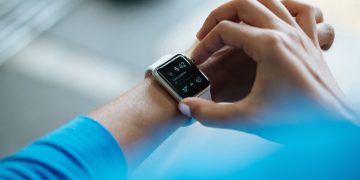The New York Times published an article this week with a strange and bigoted claim about Asian women.
The claim came when the newspaper reported, in line with the industry consensus, that for Apple to move any serious amount of iPhone production to the United States from Asia would result in making its gadgets prohibitively expensive.
That’s true, for reasons ranging from the United States’ lack of specialized manufacturing equipment to its lack of properly trained workers. But alongside those reality-based issues, the NYT decided to throw in some bizarre race science.
“Young Chinese women have small fingers,” the article reads, “and that has made them a valuable contributor to iPhone production because they are more nimble at installing screws and other miniature parts in the small device, supply chain experts said.”
For one thing, it’s not even clear that the claim that Chinese women have small fingers is even true. Research on global hand size is lacking, but one study found that the average Chinese person has a hand size approximately equal to that of the average German. An analysis of hand size around the world, though it didn’t include China, found that even the largest average differences in women’s hand size between countries was negligible.
And even if it was true, there doesn’t seem to be a lick of evidence — or, for that matter, even anyone online making the claim — that small hands are preferable for manufacturing small devices. The closest thing we could find was a paper that found that surgeons with smaller hands actually had a harder time manipulating dextrous operating tools, which would seem to contradict the NYT‘s claim that small hands are an advantage for small specialized movements.
Unsurprisingly, the NYT‘s bigoted claim went viral. One particularly compelling counterargument that emerged there: the smartphone repair technicians who engage in microsoldering fixes for broken iPhones are often men, and their larger fingers don’t seem to be causing any issues.
“My favorite part is that [there are] adult men, in America, that do iPhone repair, and they often do repair tasks much more intricate than what assembly requires,” one user noted. “Like nobody even thought about this for a second.”
Sarah Jeong, an editor at The Verge whose outrage at the NYT‘s assertion helped propel it to virality, pointed out that men do all kinds of skillful tasks on a tiny scale — such as for Warhammer 40K and other role-playing games that require users to hand-paint tabletop minifigurines.
“Grown ass men with sausage fingers are also out there painting tiny dolls using nail art brushes so they can play house… with their friends,” Jeong joked. “American men have plenty of manual dexterity.”
Julia Carrie Wong, a senior reporter at The Guardian who also blasted the wild take, revealed that she emailed the newspaper to give them a piece of her mind. In response, a communications director there told her that the NYT “does not make racial or genetic generalizations” and was simply “[citing] experts who have experience with the industrial process in US and Chinese factories.”
That’s a pretty wild claim even on its face: that the NYT is publishing race science based on anonymous experts.
It also raises an ugly possibility: that the newspaper’s use of the word “young” to describe the Chinese women working in Apple factories was supposed to insinuate something dark. Apple has a long history of getting caught employing child labor at its factories, who actually would have smaller fingers because they were minors — so it could be, whether the NYT understood it or not, that its “experts” were simply winking at the reality that it’s hard to build affordable gadgets in a country with robust labor rights.
More on Apple outrage: Apple’s AI-Powered Siri Is Such a Disaster That Employees Have Given the Team Developing It a Rude Nickname
Source link
#York #Times #Published #Bizarre #Race #Science #Asian #Women

















